Hello all,
This is the second part of my overview of the costumes of Norway. This will cover the central row of provinces in Eastern Norway, the yellow and orange ones on the map below, minus the ones I covered in the first article. This includes the provinces of Oppland, Buskerud, Telemark, and East and West Agder. All of these have at least some areas in which folk costumes were a living tradition or within living memory at the beginning of the 20th cent.
The National Bunad Council Bunad- og Folkedraktrådet , the authority on national costumes appointed by the government, has developed five categories to grade modern day bunads according to ‘authentic’ regional folk clothing:
The National Bunad Council Bunad- og Folkedraktrådet , the authority on national costumes appointed by the government, has developed five categories to grade modern day bunads according to ‘authentic’ regional folk clothing:
Category 1 – a bunad that represents a final link in the development of a folk costume. This is basically an original folk costume that has taken on the function of a bunad.
Category 2 – a bunad that has a background in a particular folk costume that is out of use but not forgotten. It is generally reconstructed from first-hand knowledge, with many examples extant.
Category 3 – a bunad that has been reconstructed from preserved folk garments which reflect the actual time and region of the piece. Pictures and writings may be used as sources in reconstruction.
Category 4 – a bunad that has been made based on random and incomplete folk material. Missing pieces have been designed to match the style of the materials.
Category 5 – a bunad that has been completely or partially freely composed. It was the 1800s bunad movement that has given these types of bunad their status.
New bunads are being designed every year, and must go through the strict judgement process of the National Bunad Council in order to be classified as a proper ‘bunad’. The council is very strict in making sure new additions follow closely the traditions and history of the area. Because of this, many designs today, even though they have the same function as a bunad, generally don’t make the cut and thus can not be called ‘bunads’. They receive the name ‘drakt’ instead.
Costumes are readily available in Norway, there are many businesses which make them. These are called Husflid. They are, however, expensive, as the Norwegians believe in paying a living wage to people who do things like embroider or weave by hand. For every one of these costumes, whether bunad or drakt, there is at least one sewing house, or husflid, which specializes in making it.
So let us continue.
Oppland
This is divided into the three districts of Vestoppland, Gudbrandsdal, and Valdres. The image at the top of the article is one of the bunads from Gudbrandsdal which has never gone out of usage, the Rondestakken.
Vestoppland
One of the costumes which represent this region was designed by the noted artist Alf Lundeby in 1932. The Lundeby costume comes in black, blue, or white. It remains very popular.
Lundeby Drakt cat 5
Vestoppland Bunad
This was designed in 1937 from pieces found in different parts of Vestoppland. cat 5
The next three costumes each represent a part of Vestoppland.
Hadeland Bunad
Hadeland is the southern part of Vestoppland, around Randsfjord.
The Hadeland Bunad is an accurate reconstruction of the local dress in the mid 1800s. It was made in plaids of different colors. Plaids are common in several neighboring districts as well. Girls wore a pale cap, married women a black one. The cap had a lace ruffle, similar to that in some Danish costumes. Like with all bunads, an underskirt must be worn. cat 3
Toten is in the east central part of Vestoppland.
Toten drakt
This design was finalized in 1971, based on pieces of costume found in this area.
men cat 5, women cat 4
Land, or Nordre Land, is in the northern part of Vestoppland.
Landingsdrakt
Work on the costume started in 1927 and was finalized in 1980. The embroidery was taken from an old shawl found in Hadeland. cat 5
Gudbrandsdal
Gudbrandsdal is a valley which extends from Lillehammer to the northwest.
https://en.wikipedia.org/wiki/Gudbrand_Valley
The men wear a red wool plaid vest, or, for more formal occasions, a brocade vest may be worn. Sometimes an older form of frock coat may be worn as well. This is shown in the second image. cat 4
Rondastakken or Livkjol
cat 1
This bunad is part of a living tradition in the valley. It is not designed or reconstructed.The most recent version is called rondastakken, which means 'striped skirt'. These were made with homewoven cloth, striped for the skirt, and plaid for the attached bodice. Livkjol means 'bodice skirt' and refers to the construction. Other types of cloth were also used in the past, and these have now come back into use.
It was known that in the early 1800's it was the fashion to wear embroidered skirts. Some of these skirts have been preserved in museums. Embroidery from these skirts were copied onto wool and used to make a livkjol with an embroidered skirt. This was the origin of the Gudbrandsdal Bunad. The original skirt for this embroidery was from Lom.
cat 4
The same embroidery was used in the 1920s to make the Gudbrandsdal Formal bunad. The bodice was also made of wool most often of the same color and also received embroidery, as did the pocket. An apron with matching embroidery was also sometimes worn. This became very popular and was the origin of the Embroidered Bunad type which was copied in so many places around Norway with different embroidery patterns, several of which we have already seen. cat 5
Another designed bunad used embroidery from a skirt found at the Graffer Farm. This is called the Graffer Bunad and remains very popular today. cat 4
Jorde Bunad
This was designed by Maria Jorde from Bøverdal in Lom.
cat 5
Other similar bunads represent particular parts of Gudbrandsdal.
Lesja Bunad or Rutastakk cat 2
Gausdals Bunad cat 4
Dovre Bunad
cat 5
Lillehammer Bunad.
This comes in blue with multicolored embroidery, or green or red with monochromatic gold embroidery of the same design. cat 5
Valdres
This valley lies in the southern part of Oppland.
Rutastakken
This is the Valdres equivalent of the Rondestakken of Gudbrandsdal. In this bunad, the skirt as well as the bodice is plaid, of many kinds. The matching mens costume also features a plaid wool vest and a black jacket. This was common in the second half of the 19th cent.
cat 3
Valdres has two livkjol type embroidered bunads.
The 'Old' Valdres Bunad
This was designed in 1914.
cat 5
The 'New' Valdres Bunad
This was designed in 1948.
cat 5
The South. or lower Valdres Bunad
cat 3
Upper Valdres Bunad, or Bringedukdrakt
This has been established as the bunad for Upper Valdres, namely Vang and Slidre. The second term refers to the stomacher or plastron which is inserted into the bodice. This was typical for the first half of the 19th cent. The everyday costume is plain blue.
cat 3
Buskerud
Buskerud borders on Oslo on the southeast, but also extends up into two major mountain valleys, Hallingdal and Nemedal. These border Valdres, Telemark and Hordaland, all areas in which the costume tradition is strong. There are also smaller distinct areas in central Buskerud, Ringerike in the north, and the coherent costume region of Siggdal-Eggedal-Krødsherad in the center. The lowland areas lost their costume tradition early, but the high mountain valleys were still wearing their traditional costumes at the beginning of the 20th century when the bunad movement began.
https://en.wikipedia.org/wiki/Buskerud
Ringerike
This is just downstream from Valdres in the same valley. In the past it was an independent fief.
It extends south to the province of Oslo.
https://en.wikipedia.org/wiki/Ringerike_(traditional_district)
There is both a local drakt cat 4 and an embroidered bunad. cat 5 Mends bunad is cat 3
Ådal is a valley in the municipality of Ringerike
They have their own embroidered bunad, designed in 1938
cat 5
Hønefoss
This bunad was designed in 1954
cat 5
Lower Buskerud
This is shown in light blue on the map with the exception of Ringerike. In these low lying areas close to the capitol, the bunads are designed or recreated. There is an embroidered bunad, cat 5,which was designed in 1939 for all of Lower Buskerud: Eiker, Lier, Drammen, Modum, Hurum, Sandsvaer and Røyken. Some of these also have their own bunads or drakten.
Hurum Bunad
This was a free composition in 1994
cat 5
Røyken drakt
A free composition in 1992
cat 5
Lier Bunad
This was a free composition completed in 1974. men cat 4, women cat 5
Modum drakt
cat 5
Eiker drakt
cat 5
Kongsberg drakt
cat 5
Hallingdal
This is one of the most famous valleys of Norway for costume, embroidery and folklore. These three valleys have distinct costumes, but they intergrade from one to the other. I have written an article on Hallingdal already. I may have to update it, as I have learned more since I wrote it.
http://folkcostume.blogspot.com/2012/06/bunad-and-rosemaling-embroidery-of.html
This is an area where the local costume is well remembered, and there are many examples to be found around the valley.
Upper Hallingdal
cat 1
This consists of the municipalities of Hol and Ål.
This man is in a Rogaland Bunad, not Hallingdal
The upper Hallingdal bunad is noted for its embroidery, an extremely short bodice, black apron for the dress bunad, and quite complex headdresses for both married women and single girls, as seen in the last two images above.
Hulda Garborg, who was so instrumental in reviving interest in Norwegian folk costumes in the early 20th cent. thought that it was important to make the costumes modern and easy to wear. She took this costume and simplified it. Perhaps the biggest change is that she replaced the headdress with a simple embroidered cap similar to that worn in Lower Hallingdal. This simplified bunad became very popular, and many people mistakenly believe it to be the authentic Upper Hallingdal bunad. Here are some examples.
Lower Hallingal
This consists of the municipalities of Hemsedal, Gol, and Nes.
The costumes are quite similar to that of Upper Hallingdal, but they traditionally wore the cap, they used a flowered or plaid apron for the formal costume, and there are other minor differences. They sometimes wore a kerchief tied around the cap, as is the custom in mid Buskerud.
cat 1
There are two mens bunads, one is rather plain black, cat 1, and the other is highly embroidered, cat 4. The second is very popular with men all over Norway who want a colorful embroidered bunad.
The everyday bunad from Hallingdal is also well remembered and still worn. It has no apron and is black or plaid.
Mid Buskerud
This consists of Sigdal - Eggedal, Krødsherad, and sometimes Flå.
Flå
This municipality is technically in Lower Hallingdal, but the costume is perhaps closer to the Mid Buskerud costume.
cat 4
Sigdal - Eggedal, Krødsherad
cat 3
Numedal
This lies over the mountains south of Hallingdal, and is north of Telemark.
Mans bunad
There are three. The gray jacket is used all over the valley, but there are also two different black bunads for Lower and upper Numedal
Gray Jacket
cat 2
Lower Numedal mens bunad with round jacket
cat 3
Upper Numedal mens bunad with short jacket.
cat 3
Lower Numedal, Flesberg
cat 2
Upper Numedal
cat 3
There is also an embroidered bunad which was designed for Numedal in 1938.
cat 4
Telemark
https://en.wikipedia.org/wiki/Telemark
Telemark is perhaps the richest province in Norway as regards costumes. The costumes were a living tradition well into the 20th cent. There are many examples of different embroideries and cuts. However, many of these reflect individual variations and different time periods. There are only three costume districts in Telemark: East Telemark, West Telemark and Tinn. This map also separates the coastal area. This was distinct culturally, but did not keep much in the way of costume. I have written a series of articles on Telemark already.
http://folkcostume.blogspot.com/2014/05/beltestakk-and-gratrje-costumes-of-east.html
http://folkcostume.blogspot.com/2014/05/gratrje-costume-of-east-telemark-norway.html
http://folkcostume.blogspot.com/2014/05/east-telemark-norway-embroidered-shirts.html
http://folkcostume.blogspot.com/2014/05/east-telemark-norway-socks-and-shoes.html
http://folkcostume.blogspot.com/2012/06/costume-and-rosemaling-embroidery-of.html
Tinn
Mens Bunad
cat 3
Omslagsliv
The embroidered bands which cross over the shoulders were originally suspenders which held up the skirt. The bodice was attached to the second underskirt. The embroidery is often done freehand, and there is much individual variation.
cat 1
Skjaelingskleda
This is an older costume from the early 1800s which shows the influence of neighboring Numedal.
cat 3
East Telemark
Mans bunad with gray jacket
cat 2
This is the most common version. It comes from the same period as the beltestakk.
Stakk og Liv
This means skirt and bodice. It is the most recent and simplest form of the East Telemark folk costume which was in use into the 1970s.
cat 1
Beltestakk
cat 2
This is an older form of the costume which was revived. It has a great deal of ornament in the form of ribbon, but has embroidery only on the shirt. The skirt is exceptionally full, which makes it fun to dance in. Because of the lack of embroidery, it is fairly inexpensive and very popular today. It is named after the very wide woven sash which is an integral part of this costume.
Raudtroje
This means red jacket and is the common embroidered form of the East Telemark Bunad. It is based on an even older form of the folk costume.
cat 3
-
West Telemark
The costume and embroidery tradition is just as rich in West Telemark. The various costume types are associated with different periods of history. The older, more elaborately embroidered forms were used as the basis for the modern bunad.
Raudsaumsbunad
This is the most recent form of the costume, this came into being around 1910. This was thought at the time to be stylishly modern. It reintroduced the old embroidery on the bodice.
cat 1
This bunad was in use roughly from 1895 to 1915 or so. It is distinguished by the embroidered bib attached to the front of the bodice. The apron was sometimes embroidered.
cat 2
Rundtroje
This is the most recent living form of the mans bunad in plain black. It matches the two womens bunads above.
cat 1
Bringeklutbunad and Gray Jacket bunad
These were worn in the early to mid 1800s by women and men, respectively. Relatively recently they have been reconstructed and begun to be worn again.
cat 3
Vest Telemark bunad
The most popular bunad today is the elaborately embroidered one which was worn even earlier, roughly from 1750 to 1850.
cat 4
Drangedal
This is a coastal area. To my knowledge this is the only coastal costume to be reconstructed in Telemark.
cat 4
Agder
In ancient times this was a petty kingdom, The name is so old that the meaning of it has been lost. Today it is divided into two provinces, West Agder and East Agder. This is the southernmost point of Norway.
https://en.wikipedia.org/wiki/Agder

This area is small, and I am surprised that It was divided in two. It is sometimes referred to as the southland. It includes Setesdal in which the folk costume is a living tradition, and coastal areas which have revived theirs. You will notice part of the coast is depicted in white with the heading 'unspecified'.
Setesdal
This district holds much the same position in Norway that Andalusia does in Spain. The costume is iconic for the country, but is not at all typical. cat 1
https://en.wikipedia.org/wiki/Setesdal
The everyday costume for the women is a white jumper with black bands on the hem. The men wear a sort of overall.
For Sundays and feast days, a second black jumper with bands of red and green on the hem was worn over this. The men put on an embroidered vest with either a fancy knitted sweater or short embroidered jacket.
Åmli
The bunad was reconstructed from old costume pieces in 1926. There are various kerchiefs and aprons preserved with different embroidery designs. cat 4
Iveland
This began to be reconstructed in 1917. This bunad may be worn with a variety of embroidered pockets, many of which are to be found. Very similar pockets are also worn in West Agder.
cat 4
West Agder
There is only one bunad for most of West Agder. The striped skirt is worn by unmarried girls or by married women on regular days. On feastdays married women wear a finely pleated black skirt. The colorful high headdress was worn by married women. Girls wore a lower one which was much less ornamented. The skirt was held up by buttoning it to woven suspenders. Shawls with various embroidery patterns were also worn. As in Iveland, the embroidery on the pockets varied quite a bit.
cat 4
Here are some embroidered shawls from West Agder with the names of the locations in which they were found.
Sirdal
cat 4
This is the northernmost valley of Vest Agder
There is also an Agderdrakt which is a free composition for all of Agder. It features several local wildflowers. I have only seen one photo of it.
cat 5
This concludes part 2.
Thank you for reading. I hope that you have found this to be interesting and informative. I hope that some of you might be inspired to try some of the incredible embroidery which is found in this area.
email: rkozakand@aol.com
Source Material:
Bjorn Sverre hol Haugen, 'Norsk Bunadleksikon' Oslo, 2009
Kjersti Skavhaug et al, 'Norwegian Bunads', Oslo, 1991
Heidi Fossnes, 'Norges Bunader og Samiske Folkedrakter', Oslo, 1993
Ellen Scheel et al, 'Bunad-Brodering', Oslo, 1997
Janice Stewart, 'The Folk Arts of Norway', University of Wisconsin, 1953
Guvnor Traetteberg, 'Folk Costumes of Norway', Oslo, 1966, 1976
Thorbjorg Ugland, 'A Sampler of Norway's Folk Costumes', Oslo, 1996
Laila Duran, 'Scandinavian Folklore vol I - III', Sweden, 2011-2013
Iveland
This began to be reconstructed in 1917. This bunad may be worn with a variety of embroidered pockets, many of which are to be found. Very similar pockets are also worn in West Agder.
cat 4
West Agder
There is only one bunad for most of West Agder. The striped skirt is worn by unmarried girls or by married women on regular days. On feastdays married women wear a finely pleated black skirt. The colorful high headdress was worn by married women. Girls wore a lower one which was much less ornamented. The skirt was held up by buttoning it to woven suspenders. Shawls with various embroidery patterns were also worn. As in Iveland, the embroidery on the pockets varied quite a bit.
cat 4
Here are some embroidered shawls from West Agder with the names of the locations in which they were found.
Sirdal
cat 4
This is the northernmost valley of Vest Agder
cat 5
This concludes part 2.
Thank you for reading. I hope that you have found this to be interesting and informative. I hope that some of you might be inspired to try some of the incredible embroidery which is found in this area.
email: rkozakand@aol.com
Source Material:
Bjorn Sverre hol Haugen, 'Norsk Bunadleksikon' Oslo, 2009
Kjersti Skavhaug et al, 'Norwegian Bunads', Oslo, 1991
Heidi Fossnes, 'Norges Bunader og Samiske Folkedrakter', Oslo, 1993
Ellen Scheel et al, 'Bunad-Brodering', Oslo, 1997
Janice Stewart, 'The Folk Arts of Norway', University of Wisconsin, 1953
Guvnor Traetteberg, 'Folk Costumes of Norway', Oslo, 1966, 1976
Thorbjorg Ugland, 'A Sampler of Norway's Folk Costumes', Oslo, 1996
Laila Duran, 'Scandinavian Folklore vol I - III', Sweden, 2011-2013













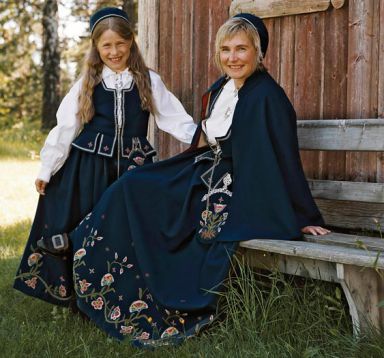













































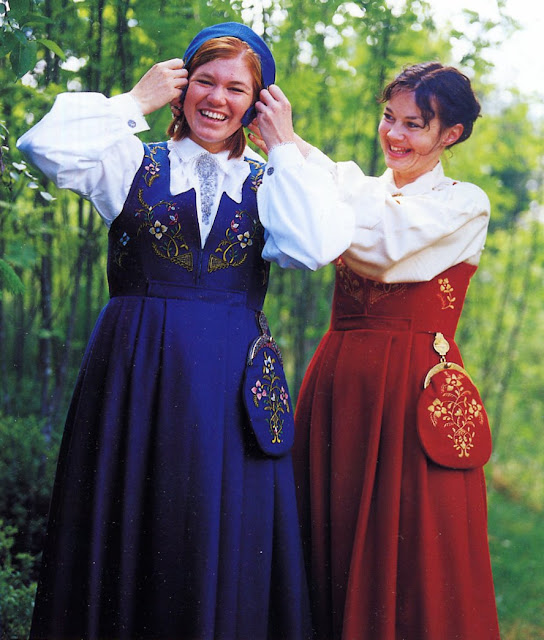















































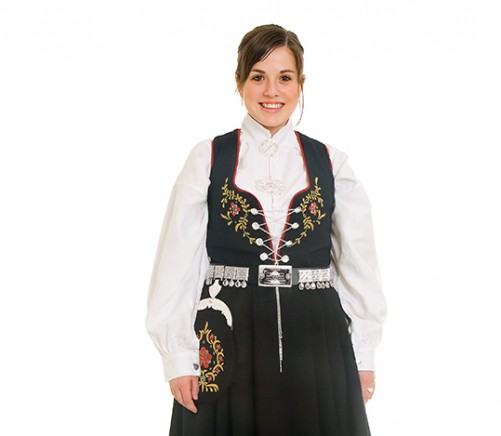






























































































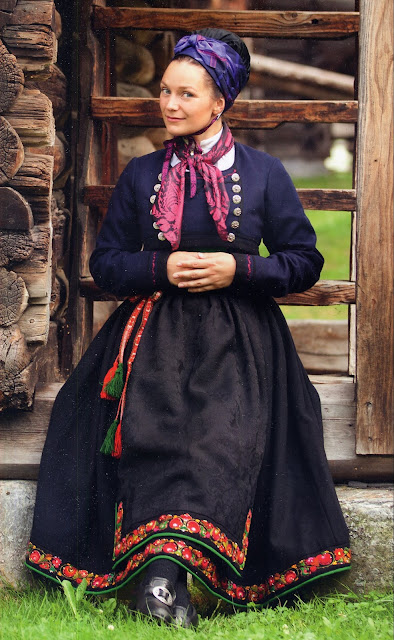







































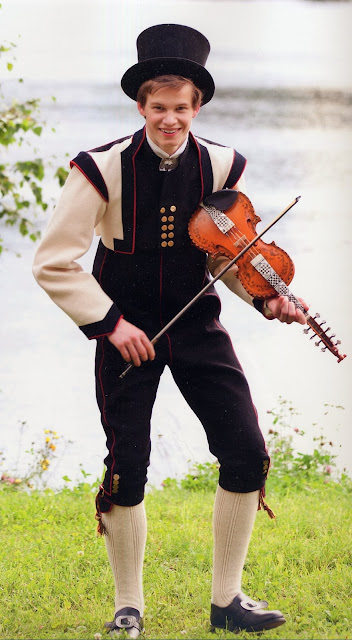




























































You do an amazing job of pulling this very informative information together. Thank you! Do you have information on Rogaland Bunads, and Stavanger Bunads in particular? I am wanting to do some embroidery from that area since we just found that it is where my mothers mother was born. Thank you for any information you may have!
ReplyDeleteYou can write me at my eail rkozakand@aol.com
Deleteor wait for part 3 to come out. Rogaland has basically one bunad with different embroideries from different parts of the province. I can send you some images if you like. Stavanger does have its own drakt, but I am not very impressed by it. Here is a website from which you can order kits or full costumes. http://www.nordakerbunader.no/
I am working on parts 3 and 4 of this series now.
ReplyDeletepart 4 will be published first, part 3 will include Rogaland. Sou you will see it when i finish. Keep an eye out for it. Thank you for your comment.
One small correction on the West-Agder women's bunad; the skirt is not buttoned to the vest. instead, the skirt is buttoned to woven suspenders which are worn under the vest.
ReplyDeleteIt is the ends of the suspenders that you see hanging down at the front...
DeleteThank you for the information
Deletetusen takk....meget fint
ReplyDeleteHei. Har lett år og dag etter en drakt/bunad som er mer lokal for Kongsberg enn det Buskerud bunaden er. Finnes det virkelig en egen drakt for Kongsberg?!!Henriette. 😄
ReplyDeleteThis comment has been removed by the author.
ReplyDeleteI am annotating an old family diary of a trip to Norway in 1927. I would like to include a color picture of the traditional bunad rondastakken from the area where my Norwegian family lives. Could I have permission to use one of your photos in this book? Lorie
ReplyDeleteMy Grandmother was from Lillesand, Norway which is labeled on map as “Uspesifisent”. Does that mean unspecified?
ReplyDeleteI'm looking for wear from the Bygland area before 1940s.
ReplyDeleteAre you going to publish a book ?
ReplyDeleteI loved the awesome information. It is the most complete I have ever encountered!! Thank you so very much
ReplyDelete. Takk Sandra in Seattle